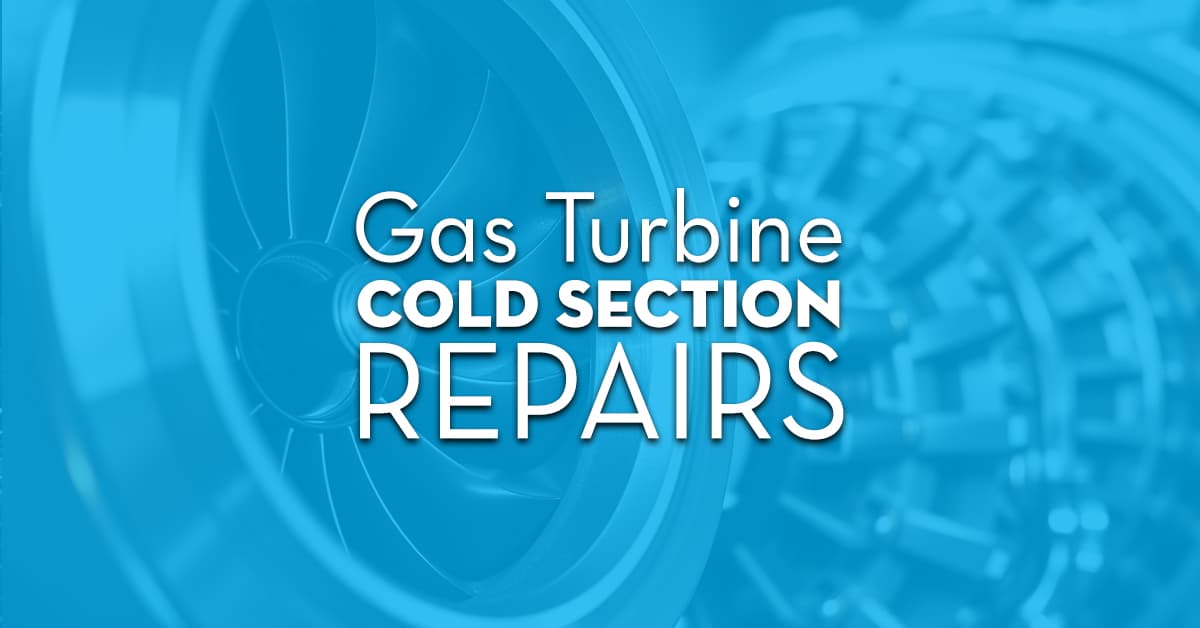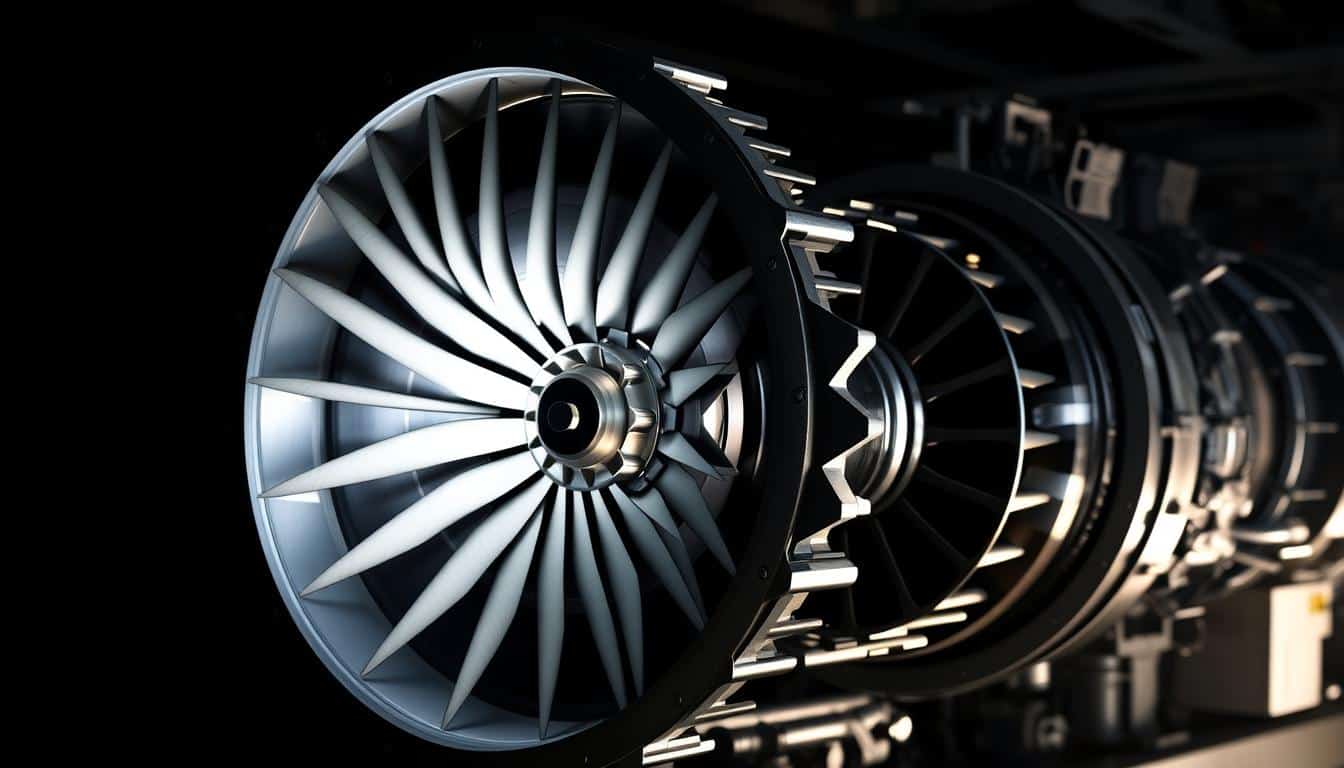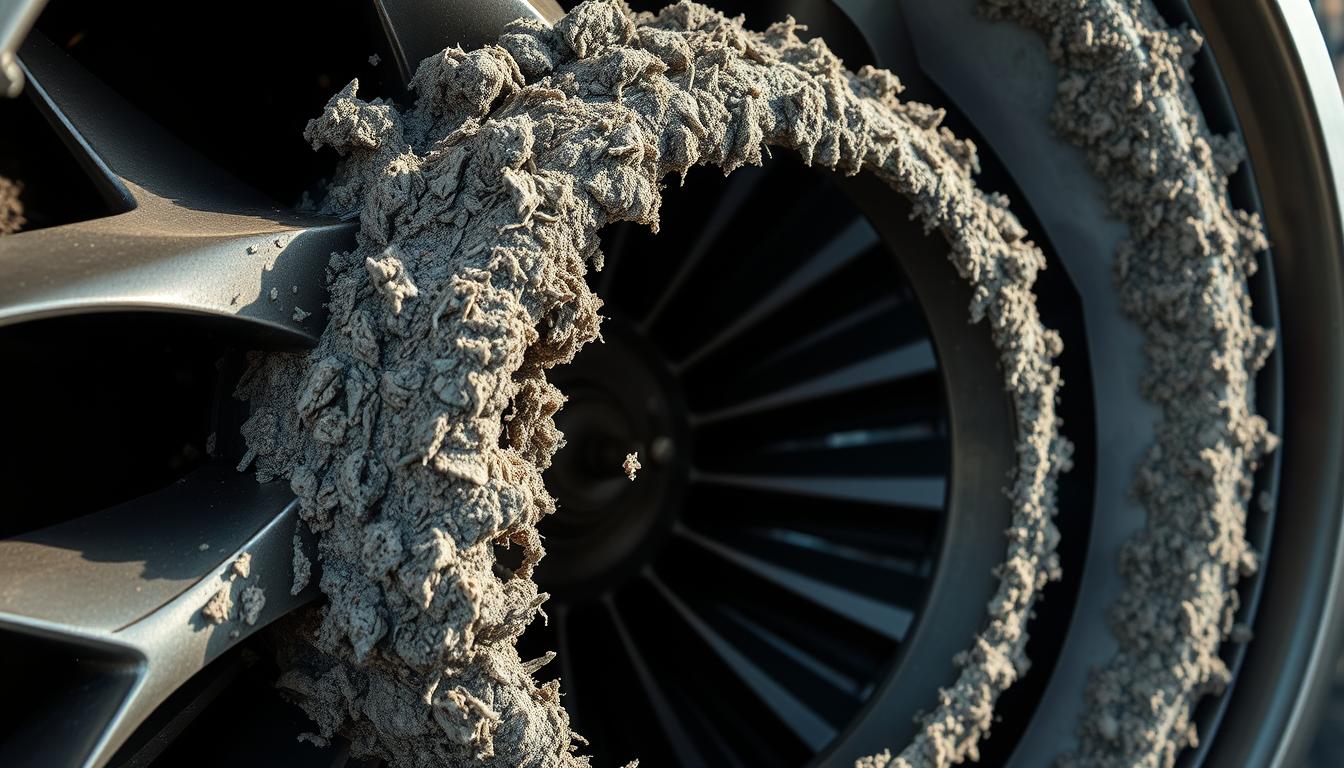
Gas turbine cold section repairs are critical for keeping industrial gas turbines running efficiently. Located in Houston, Texas, Allied Power Group offers detailed repair services for these gas turbine engine components. This includes compressor blades, stator vanes, and inlet guide vanes. By tackling issues like fouling, erosion, and corrosion, these repairs can enhance plant performance and cut down on maintenance expenses.
Ensuring the cold section is regularly maintained is key to maintaining turbine efficiency and prolonging its life. Skilled technicians use specialized repair methods, including inspection, cleaning, refurbishment, and parts replacement. These turbine component repair efforts aim to restore the parts to their original state. Collaborating with a trusted service like Allied Power Group ensures operators get unrivaled repair solutions, minimizing downtime.
Key Takeaways
- Cold section repairs are vital for maintaining gas turbine efficiency and performance
- Common issues addressed include fouling, erosion, and corrosion
- Specialized repair processes restore cold section components to original specifications
- Regular maintenance and repairs extend equipment lifespan and reduce costs
- Partnering with experienced service providers ensures quality repairs and minimal downtime
Understanding the Cold Section of a Gas Turbine
The cold section, also known as the compressor section, is a vital part of a gas turbine. It draws in and compresses air before it reaches the combustion chamber. This process is key to the turbine’s performance and efficiency. Knowing about the cold section and its parts is essential for keeping the turbine running well.
Components of the Cold Section
The cold section has several important parts that work together. They ensure air is drawn in and compressed efficiently:
- Inlet guide vanes: These vanes guide the incoming air into the compressor blades at the best angle for compression.
- Compressor turbine blades: These blades, in multiple stages, rotate fast to compress the air. This increases its pressure and temperature.
- Stator vanes: Between each stage of compressor blades, stator vanes direct the compressed air to the next stage. This ensures efficient flow and further compression.
Function and Importance of the Cold Section
The cold section’s main job is to compress ambient air to a high pressure before it enters the combustion chamber. This compressed air mixes with fuel, igniting to produce hot gases. These gases then power the turbine. The efficiency of air compression is critical to the turbine’s overall performance.
Keeping the cold section components clean and intact is vital. Damage to compressor blades, inlet guide vanes, or stator vanes can reduce air intake velocity and compression efficiency. This can lower turbine output and increase fuel use.
Learn more about Gas Turbine Hot Section Repairs.
Common Issues in Gas Turbine Cold Sections
Gas turbine cold sections face numerous challenges that can affect their performance and efficiency. These problems stem from the harsh operating conditions and the presence of contaminants in the inlet air. Let’s examine some of the common issues these sections encounter.
Fouling and Contamination
Compressor fouling is a significant concern in gas turbine cold sections. It happens when particles like dust, dirt, and oil settle on compressor blades and vanes. This buildup restricts air flow and decreases compressor efficiency. Particle ingestion also contributes to fouling, negatively impacting gas turbine performance.
Erosion and Wear
Blade erosion is a major issue in gas turbine cold sections. High-velocity particle impacts cause material loss and alter blade geometry. This erosion is more severe in areas with high concentrations of abrasive particles, such as deserts or industrial zones. Over time, it reduces gas turbine efficiency and power output.
Corrosion and Material Degradation
Corrosion is a persistent problem in gas turbine cold sections, more so in coastal or offshore environments. Salt, moisture, and other corrosive agents in the air can lead to material degradation and corrosion product formation on compressor components. High temperatures and stresses also accelerate corrosion, compromising component integrity.
Foreign object damage (FOD) poses a threat to gas turbine cold sections. Ingestion of objects like birds, ice, or debris can severely damage compressor blades and components. FOD can cause immediate performance loss and may require extensive repairs or replacements to restore functionality.
Identifying the Need for Cold Section Repairs
Regular performance monitoring is vital for spotting the need for cold section repairs of turbines. Tracking indicators like compressor efficiency, pressure drop, and vibration levels helps maintenance teams catch issues early. A drop in compressor efficiency or an increase in pressure drop can indicate fouling, erosion, or other cold section problems.
Borescope inspections are also critical for assessing the cold section’s condition. These involve using a small camera inserted into the gas turbine to examine compressor blades, vanes, and other parts. Such inspections can show visible damage like cracks, dents, or corrosion, and also detect contaminants on the cold section surfaces.
Combining data from performance monitoring and borescope inspections gives maintenance teams a full picture of the cold section’s health. This info is key for planning maintenance, allowing operators to schedule repairs during planned outages. This approach minimizes unexpected downtime and efficiency loss.
Acting quickly on repair needs is essential for keeping gas turbines running efficiently and for a long time. Addressing cold section issues promptly prevents minor problems from becoming major damage. This can save on costly repairs and reduce downtime. Regular monitoring and inspections are vital for maintaining gas turbine efficiency and reliability.
Gas Turbine Cold Section Repair Process
The repair of a gas turbine’s cold section is a detailed process aimed at improving its efficiency and performance. It involves several critical stages. Each stage is essential for ensuring the turbine operates at its best.
Inspection and Assessment
The first step is a thorough component inspection. Skilled technicians examine each part of the cold section. They look for wear, damage, or contamination. This helps determine the extent of repairs needed and guides the development of a targeted repair plan.
Cleaning and Refurbishment
After inspection, the cleaning process starts. Advanced techniques, like media blasting or chemical cleaning, are used. These methods remove fouling, debris, and corrosion from the components. This step is vital for restoring the parts’ original surface condition.
Following cleaning, damaged components undergo refurbishment. This may include coating restoration, where protective coatings are reapplied. Material restoration techniques, like welding or thermal spraying, are used to repair eroded or worn surfaces.
Parts Replacement and Reassembly
In some cases, components may be too damaged for repair. When this happens, part replacement is necessary. High-quality replacement parts are sourced and installed to ensure optimal turbine performance.
Once all repairs and replacements are done, the cold section is reassembled. Technicians follow precise specifications and torque settings for proper alignment and function. The reassembled cold section then undergoes rigorous testing to verify its performance and efficiency.
Benefits of Regular Cold Section Maintenance and Repairs
Regular maintenance and timely repairs of gas turbine cold sections bring numerous benefits to power plant operators. By focusing on compressor component upkeep, facilities can enhance turbine performance. This also minimizes operational disruptions.
Improved Efficiency and Performance
Regular cold section maintenance, including thorough cleaning and component refurbishment, boosts compressor efficiency. Removing fouling and contamination allows the compressor to operate at its best. This results in better heat rates and lower fuel consumption.
This leads to significant cost savings and a reduced environmental impact for the power plant.
Extended Equipment Lifespan
Investing in component life extension through proactive cold section repairs can extend the service life of gas turbine equipment. Addressing wear, erosion, and corrosion issues early on reduces the need for frequent part replacements and major overhauls. This strategy saves on long-term maintenance costs and ensures turbine reliability and availability.
Reduced Downtime and Maintenance Costs
Unexpected failures and unplanned downtime can be very costly for power plants. Implementing a robust maintenance optimization strategy, including regular cold section inspections and repairs, helps mitigate these risks. Proactive maintenance enables better planning, shorter outage durations, and lower maintenance costs.
This ultimately boosts plant profitability and operational stability.
Choosing the Right Service Provider for Turbine Cold Section Repairs
Choosing the right service provider for your gas turbine’s cold section is vital. A trusted and skilled company can enhance your equipment’s performance and efficiency. This approach also reduces downtime and expenses.
When selecting a service provider for your turbine cold section repairs, consider these factors:
Experience and Expertise in Gas Turbine Repairs
Seek a company with a solid history in repairing various gas turbine models. They should have a deep understanding of OEM specifications. Experienced technicians with OEM expertise can accurately diagnose and solve issues. This ensures your equipment is repaired to the highest standards.
Quality Assurance and Certifications
Opt for a service provider that values repair quality and follows strict quality control measures. ISO 9001 certifications show a commitment to quality and standardized processes. This gives you confidence that your turbine cold section repairs are in capable hands.
Turnaround Time and Customer Support
Responsive customer service and quick turnaround times are essential to minimize downtime. Choose a service provider that offers reliable support and keeps you informed. They should work efficiently to get your equipment back up and running as quickly as possible.
Conclusion
Maintaining the cold section of a gas turbine is vital for its optimal performance, efficiency, and reliability. Understanding common issues like fouling, erosion, and corrosion is key. This knowledge allows operators to tackle these problems through proactive maintenance and timely repairs. A well-rounded gas turbine maintenance program extends equipment life, cuts downtime, and lowers costs.
Choosing the right repair partner for gas turbine cold section repairs is critical. An experienced service provider, like Allied Power Group, ensures repairs meet the highest standards. They use advanced techniques and quality parts. Their expertise and commitment to customer support make them a trusted partner for industries relying on gas turbines.
By focusing on gas turbine maintenance and partnering with a reputable service provider, operators can enhance plant performance and reduce costs. Regular maintenance and timely repairs ensure the reliability of power generation. This investment is essential for the long-term success and profitability of any business.

